Michele Feltman Strider's Blog
May 17, 2017
What is Homestyle?
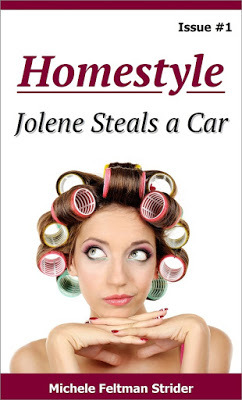 So, what’s this Homestyle thing you keep yammering about?
So, what’s this Homestyle thing you keep yammering about?
Homestyle is a series of 13 monthly vignettes, set in and around the Homestyle Salon and Spa in Bayou La Batre, Alabama. The series focuses on Jolene Harris, the young beautician who first appeared in my second novel Hometown . It's a comedy, so, theoretically, funny.
What's with all of the "Home" titles?
I dunno. Lack of imagination? Sheer laziness? Something like that.
Yeah, no. Really, what gives?
All of my work, including Homestyle, takes place in the same fictional universe. Though all are tied and share characters, the novels and the series each stand alone.
OK, whatever. Where can I get it?
The same place you get socks and cat food – Amazon .com
I'm tardy to the party. Does Homestyle need to be read in order?
Ideally, yes, but you do you.
Can I buy Homestyle in print?
Not at this time. Homestyle was designed to be a short, fun read and the digital-only platform keeps the cost low.
I don't have a Kindle. Can I still read Homestyle?
Yeah, buddy! You can read Homestyle on any digital device, including your laptop or desktop, with the Kindle app or Kindle Cloud Reader. Basically, whatever you're reading this on should work.
Say I see you in a bar sometime and want to send you a drink in appreciation of your beauty and genius. Is that cool?
Gin and tonic and yes.

Published on May 17, 2017 09:00
December 10, 2013
Homeless (Excerpt)
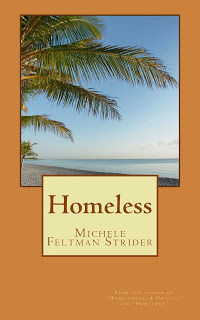 Available now from Amazon.August 2006
Available now from Amazon.August 2006Midwest City, OK
I didn't really know my cousin Laura-Lynn. She was my aunt Louise's only child, but had moved away by the time I was born. She blew through town a few times when I was a kid, but I hadn't seen her in years. She moved back to Oklahoma shortly before she died, but didn't tell anyone in the family. I only went to the funeral because my dad threw out his back loading bags of fertilizer into the truck and Mom wanted me to drive her.
I did notice an unfamiliar man, standing well away from the rest of the assembled at the graveside service. He was older, tall, but slouched, his shoulders hunched. His clothes were rumpled and creased, as was his face, but there was still something about both that said “wealthy.” Maybe it was the deep black Mercedes he was leaning against. His eyes were hidden by equally dark sunglasses, but mine weren't and I had to look away when he noticed me staring. It's amazing how many details your mind can capture in an instant: Charcoal gray sport coat over a black crew neck sweater. Tan slacks. Black belt and shoes, good leather and well made. Hands in pockets, like a guilty school boy. Slim build, but with the soft start of a belly. Hair gone gray, skin sun-dried leather, forehead creased. If he'd been handsome once, there was no sign of it now.
I meant to ask Mom about him after the service, but it slipped my mind in all the family hubbub. Months went by and I would've forgotten about him entirely if it hadn't been for a library book.
I was at work early one morning, getting ready to sort through the pile of stuff that had accumulated on my desk during the previous day. In addition to that mess, there was a stack of “new arrival” books sitting in my chair. Once again surrendering to the chaos that is a public library, I made myself comfortable on the floor, using my creaky wooden desk as a backrest. Hoping for fortification through caffeination, I pulled the top book off the stack to thumb through while I drank my coffee. It was at an angle, set apart from the rest – the clerk's sign that it was something to which she felt I should pay special attention.
Red Sky Mourning (2006, Viking Press) was the latest release from “award-winning author” John Anders Erickson. I'd read all sorts of rave reviews of it. The waiting list of patrons was already two pages long and I considered the ethical implications of sneaking it home for a quick read before putting it out on the shelf. Librarian's prerogative, I figured.
Since it was not yet in circulation, it was one of the few books in the library without nerd-, Groucho-, or cat-eye sunglasses drawn over the author's photo, so it took me a moment to place him – John Anders Erickson.
Posed, lit, and probably Photoshopped, the man on the cover looked healthy and rugged, with bright blue eyes. He leaned in toward the camera seductively, cradling a meerschaum pipe, the sleeves of his white shirt rolled up to the elbow, exposing the famed mermaid tattoo on his bulging, sailor's forearm. No wonder he'd been so startled when he caught me staring at him. I couldn't believe I hadn't recognized him immediately, but I wasn't exactly expecting to see the world famous author of Vikings and Pirates: Tales of My Fathers and The Mermaid's Dirge at a family funeral in Ada, Oklahoma.
I turned the book over to look at the high-melodrama artwork on the front, but it was covered by a large yellow sticky note with the letters “OMG” underlined and followed by half a dozen exclamation points and a large arrow pointing toward my right hand. Barbara again. Sometimes I worried that the clerk drank too much coffee. She was a very excitable person – a single mom working her way through junior college on caffeine and determination.
I opened the book, quickly closed it, tried to sit down, found I was already sitting, and opened it again. Beneath his standard dedication, “For Stjerne,” was the author's scrawling, blue-ink signature.
Someone somewhere had made a huge mistake. Obviously this wasn't intended for a little branch library in Midwest City, Oklahoma. I'd have to call the publisher on Monday and get it straightened out. Those three handwritten words made this pristine first edition worth a lot of money to a collector. It was far too valuable for circulation in a public library. Now I absolutely had to take it home with me, for safe keeping if nothing else.
My first concern, though, was how to read it without leaving any incriminating bends in the virgin paper. I was trying a technique that involved lying on my back and holding the book over my head when something fluttered out from between the pages and landed on my face.
It was a photograph, one of the old self-developing kind with the broad white border. Faded with age, it showed a young man, impossibly tall and comically lanky, with a bright, open face, and thick, somewhat shaggy blond hair. John Anders Erickson. His clothes were egregiously 1970s and he looked to be somewhere in his late twenties or early thirties. He was hunched forward, just as I'd seen him at the funeral, but in the picture he was smiling widely, with his long arms wrapped tightly around a slim young woman with long, coppery hair – Laura-Lynn Weaver, my dead cousin.
____________________________________________________________________________
Read the rest today on Amazon.com

Published on December 10, 2013 09:09
August 14, 2013
Hometown
Bayou La Batre, Alabama
Chapter One
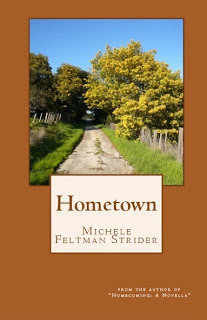 There are all sorts of unflattering things I could say about my hometown. I know because I've practiced. You might even say it was my major course of study during my high school years.
There are all sorts of unflattering things I could say about my hometown. I know because I've practiced. You might even say it was my major course of study during my high school years. Eventually I graduated and, finally, had the whole world in front of me and no obligations to hold me back. So, naturally, I immediately married a hometown boy with family ties deep enough to be genetically suspect.
It was not at all unusual to be in the Walmart with Gary only to find that every single person in the store was a relation of some sort or another. With no living family to speak of and only one half of one generation residing below ground, you can imagine how thrilled his family was to add me to their tree. When we got married, Gary's mother, Irene – an aggressively thin woman with hard gray eyes – told me that their family bible had been lost during hurricane Frederick, but I'd always suspected she'd hidden it rather than add my name to that most sacred of genealogies. That was actually fine with me, since I have terrible handwriting and never had developed a satisfactory trademark signature.
Everyone suspected that I was pregnant when we made the announcement (complete with short engagement period) about a week after I graduated, and my size did little to dispel that rumor. It was Mrs. Harris, my friend Jolene's mama, who convinced me to lose weight before the big day. She said that my wedding photos were the most important pictures I would ever have taken so it was important to look as much like the movie stars in the magazines as possible. She's a hairdresser and has been married three times, so has a lot of experience with weddings.
For the six weeks before the wedding I worked my ass literally off and, on the big day, I managed to close the zipper of that size twelve dress. It was the thinnest I had ever been. I thought my improved appearance might help ingratiate me with my stick-thin mother-in-law-to-be, but instead she'd been horrified by each dropped pound. My decreasing waistline could only mean that I was not, as she suspected, knocked up. Gary was not marrying me out of some noble, if misguided, sense of duty or responsibility. He had, as she saw it, simply settled.
Get your copy of Hometown today from Amazon.com

Published on August 14, 2013 07:44
April 29, 2013
Watch for my new blog, coming soon: Hot Ginger Mess
Published on April 29, 2013 20:14
February 6, 2013
If My Life Were A Reality TV Show

When I was a child, my parents would often find me delivering a
monologue to my stuffed animals, the bathroom mirror, a blank wall,
etc. When asked what I was doing, I'd explain that I was “addressing
my home viewing audience.” This was in the late 70s/early 80s, before
the prevalence of both Reality TV and juvenile psychiatric
medications. And, yes, my parents are saints for having put up with
me.
However, as the years have passed and with “Reality TV” now a
reality, I've had to face the fact that I'm much less interesting
than when I was five and that my adult life yields few “must see”
moments. I rarely walk around my house in full makeup and heels. José
Eber has never come over to do my hair. Movie stars and professional
athletes don't drop by to drink and dish. I have no secret
children/spouses/identities. I'd never waste good (or even bad) wine
tossing it in someone's face. I cannot sing and will not eat bugs.
My daily life as Reality TV:
The Real World: Middle Age
Iron Chef Microwave
The Real Housework of Albany
Survivor: Trader Joe's at 5:30PM on a Friday
Dancing with the Swiffer Mop
The Amazing Race For a Parking Spot on Solano Ave.
American Idle: I Catch Every Yellow Light on Van Ness Avenue
The Biggest Loser: Eyeglasses
American Picker-Upper and Puter-Awayer
Keeping Up With the Cat Hair
Dustbusters
What Not To Wear
Today's lesson: I really hope my husband never sets up a “nanny
cam.” (Me: Walking around the house singing the theme song to "Goldfinger," substituting the word "snöflinga.")
Next: It Gets Worse: The Power of Positive Pessimism

Published on February 06, 2013 06:53
January 29, 2013
How About Them 'Niners
According to the New York Times, on this day in 1850 “Henry Clay introduced in the Senate a compromise bill on slavery that included the admission of California into the Union as a free state.” As would eventually become the hallmark of the state's politics, this did not happen quickly, easily, or without controversy.
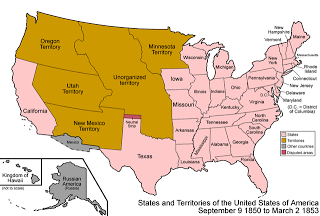 This new 31st state was separated from the rest of the United States by large swathes of wilderness known as “territories,” one of which had the rather descriptive title of “Unorganized Territory.”* One of the chief reasons lawmakers were so interested in acquiring this stretch of land over 2500 miles away was the 12 million ounces of gold being pulled from its rivers and streams.
This new 31st state was separated from the rest of the United States by large swathes of wilderness known as “territories,” one of which had the rather descriptive title of “Unorganized Territory.”* One of the chief reasons lawmakers were so interested in acquiring this stretch of land over 2500 miles away was the 12 million ounces of gold being pulled from its rivers and streams.
Welcome to California's first cycle of Boom-and-Bust: The Gold Rush
In 1848, gold was discovered at Sutter's Mill near Placerville, CA. The land's owner, John Sutter, planned to keep this information secret in order to preserve his dream of an agricultural empire known as “Little Switzerland.” Local merchant Samuel Brannan, who, as it happened, had just gotten into the mining supplies game, put the kibosh on that by running up and down the streets of San Francisco with a vial of nuggets shouting “Gold! Gold! Gold from the California River.”**
The California Gold Rush led to the largest mass migration in U.S. history, bringing over 300,000 people from all over the world. In 1849 alone, approximately 90,000 people arrived in California.
One in twelve 49ers perished, due to mining accidents, disease, or homicide. The native California tribes fared much worse, falling from an estimated population of 150,000 in 1845 to fewer than 30,000 by 1870. According to the state government, 4500 of those deaths were due to violence.
On average, half of gold seekers made a profit, occasionally spectacular, but mostly modest. Many, especially those who arrived in later years, were less fortunate. Merchants and other businessmen made far more money than the majority of miners. Companies like Levi's, Armour Meats, Studebaker, and Wells Fargo all grew out of California's Gold Rush. At the time, the wealthiest man in California was merchant, publisher, and local loudmouth Samuel Brannan, who is considered the first millionaire of the Gold Rush.
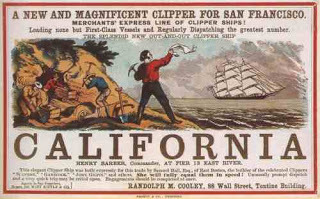 Gold was sent from California to points around the globe. A sidewheel steamer, the S.S. Central America, sank off the coast of the Carolinas while carrying 10 tons of California gold, valued at over $2 million. The gold was retrieved in 1987 using a remotely operated vehicle and now has an estimated value between $100 - $150 million.
Gold was sent from California to points around the globe. A sidewheel steamer, the S.S. Central America, sank off the coast of the Carolinas while carrying 10 tons of California gold, valued at over $2 million. The gold was retrieved in 1987 using a remotely operated vehicle and now has an estimated value between $100 - $150 million.
California has long had a high cost of living. In 1849, an egg could cost the equivalent of $25 in today's terms, a pound of coffee $100, and a pair of boots $2500. According to my informal research, today a single egg costs roughly $0.28, a pound of Starbucks is $13.95, a pair of boots is $2500.***
 Today's lesson: I've been hearing a lot about the 49ers this week.
Today's lesson: I've been hearing a lot about the 49ers this week.
Next: Maybe something about lip syncing... or wardrobe malfunctions... or beer commercials...
__________________________________________________
*Much of this area would later be known as “The Big 12.” Make of that what you will.
**Thus making prostitution California's fourth oldest profession, after farming, mining, and marketing.
***A girl can dream, right?
 This new 31st state was separated from the rest of the United States by large swathes of wilderness known as “territories,” one of which had the rather descriptive title of “Unorganized Territory.”* One of the chief reasons lawmakers were so interested in acquiring this stretch of land over 2500 miles away was the 12 million ounces of gold being pulled from its rivers and streams.
This new 31st state was separated from the rest of the United States by large swathes of wilderness known as “territories,” one of which had the rather descriptive title of “Unorganized Territory.”* One of the chief reasons lawmakers were so interested in acquiring this stretch of land over 2500 miles away was the 12 million ounces of gold being pulled from its rivers and streams. Welcome to California's first cycle of Boom-and-Bust: The Gold Rush
In 1848, gold was discovered at Sutter's Mill near Placerville, CA. The land's owner, John Sutter, planned to keep this information secret in order to preserve his dream of an agricultural empire known as “Little Switzerland.” Local merchant Samuel Brannan, who, as it happened, had just gotten into the mining supplies game, put the kibosh on that by running up and down the streets of San Francisco with a vial of nuggets shouting “Gold! Gold! Gold from the California River.”**
The California Gold Rush led to the largest mass migration in U.S. history, bringing over 300,000 people from all over the world. In 1849 alone, approximately 90,000 people arrived in California.
One in twelve 49ers perished, due to mining accidents, disease, or homicide. The native California tribes fared much worse, falling from an estimated population of 150,000 in 1845 to fewer than 30,000 by 1870. According to the state government, 4500 of those deaths were due to violence.
On average, half of gold seekers made a profit, occasionally spectacular, but mostly modest. Many, especially those who arrived in later years, were less fortunate. Merchants and other businessmen made far more money than the majority of miners. Companies like Levi's, Armour Meats, Studebaker, and Wells Fargo all grew out of California's Gold Rush. At the time, the wealthiest man in California was merchant, publisher, and local loudmouth Samuel Brannan, who is considered the first millionaire of the Gold Rush.
 Gold was sent from California to points around the globe. A sidewheel steamer, the S.S. Central America, sank off the coast of the Carolinas while carrying 10 tons of California gold, valued at over $2 million. The gold was retrieved in 1987 using a remotely operated vehicle and now has an estimated value between $100 - $150 million.
Gold was sent from California to points around the globe. A sidewheel steamer, the S.S. Central America, sank off the coast of the Carolinas while carrying 10 tons of California gold, valued at over $2 million. The gold was retrieved in 1987 using a remotely operated vehicle and now has an estimated value between $100 - $150 million. California has long had a high cost of living. In 1849, an egg could cost the equivalent of $25 in today's terms, a pound of coffee $100, and a pair of boots $2500. According to my informal research, today a single egg costs roughly $0.28, a pound of Starbucks is $13.95, a pair of boots is $2500.***
 Today's lesson: I've been hearing a lot about the 49ers this week.
Today's lesson: I've been hearing a lot about the 49ers this week.Next: Maybe something about lip syncing... or wardrobe malfunctions... or beer commercials...
__________________________________________________
*Much of this area would later be known as “The Big 12.” Make of that what you will.
**Thus making prostitution California's fourth oldest profession, after farming, mining, and marketing.
***A girl can dream, right?

Published on January 29, 2013 07:17
January 22, 2013
Going Viral
 We are 22 days into the new year and I've been sick for most of them. Never fear! It's not been a total loss. The countless hours of sniffling and couch surfing have afforded me the opportunity to make the following observations:
We are 22 days into the new year and I've been sick for most of them. Never fear! It's not been a total loss. The countless hours of sniffling and couch surfing have afforded me the opportunity to make the following observations:Soaking in the bathtub is far more boring than advertised.
Constant coughing has allowed me to fully explore the acoustic possibilities of the apartment.
Sneezing is much more satisfying if you cuss loudly while doing so.
Mexican Sprite has magic healing properties its U.S.-born counterpart lacks.
Saltines are possessed of a subtle and addictive deliciousness.
Chocolate tastes funny, yet I keep eating it.
Everything smells weird, which seems unfair, since I can't actually breath through my nose.
Watching an entire season of 30 Rock straight through can put you in a meditative trance. (A couple of shots of Robitussin also helps.)
“You may experience drowsiness.” Translation: You will hibernate until Spring.
Cats can sense your weakness and will take advantage.
Lying down on the bed is an invitation for the phone to ring.
Lying down on the couch is an invitation for the cat to walk across your face.
Lying down is a temporary state at best, as oxygen soon becomes an issue.
Without NyQuil, the entirety of human civilization would crumble.
The ultimate achievement of human civilization: Luden's Cherry Cough Drops.
Today's lesson: Wash often with soap and hot water. Cover your mouth when you sneeze or cough. Use lots of hand sanitizer. Tis the season to be germy.
Next: A treatise on the nature of art or beauty or something like that. I made some notes somewhere while in the depths of a cough syrup binge...

Published on January 22, 2013 06:57
December 12, 2012
12/12/12
The more things change, the more they... well... become different, actually.
Below is a chart comparing and contrasting some random facts and events from 1912 and 2012.
1912
2012
A first class stamp cost $0.02.
A first class stamp costs $.45.
There were 95,335,000 people living in the U.S., 1,650,000,000
worldwide.
There are 314,923,000 people living in the U.S., 7,057,950,000
worldwide.
The average life expectancy for a male in the U.S. was 47.
The average life expectancy for a male in the U.S. is 75.6.
Best selling car in the U.S.: Ford Model T.
Best selling car in the U.S.: Ford F-Series trucks.
The tallest structure in the world was the Eiffel Tower in
Paris, France. (1,063 ft)
The tallest structure in the world is the Burj Khalifa, in
Dubai, UAE. (2,717 ft)
The Titanic sank, killing over 1500 people.
The Titanic movie was re-released, grossing over $57 million.
New Mexico and Arizona became the 47th and 48th
States, respectively.
New Mexico and Arizona each file petitions for secession from
the United States.
U.S. athletes brought home 25 gold medals from the Stockholm
Olympics. 28 nations competed.
U.S athletes brought home 46 gold medals from the London
Olympics. 204 nations/regions competed.
The first Bay to Breakers race was run in San Francisco.
American runner Bobby Vlught won with a time of 44:10.
The 101st Bay to Breakers race was run in San Francisco. Kenyan
runner Sammy Kitwara won with a time of 34:41.
Edgar Rice Burrows' character Tarzan first appears in the pulp
magazine, The All-Story, delighting audiences and inspiring
two dozen sequels.
Edgar Rice Burrow's character John Carter first appeared on the
big screen, disappointing audiences and inspiring countless yawns.
Lucy Maud Montgomery publishes Chronicles of Avonlea,
a fictionalized account of life in a small town in Canada.
Michele Feltman Strider publishes Hometown,
a fictionalized account of life in a small town in the United
States.
The Girl Scouts organization
was founded by Juliette Gordon Low.
I finally come to terms with
my Thin Mint Thighs and Shortbread Bum.
Today's lesson: I spend far too much time on Wikipedia.
Next: Something about King Tides. Maybe.


Below is a chart comparing and contrasting some random facts and events from 1912 and 2012.
1912
2012
A first class stamp cost $0.02.
A first class stamp costs $.45.
There were 95,335,000 people living in the U.S., 1,650,000,000
worldwide.
There are 314,923,000 people living in the U.S., 7,057,950,000
worldwide.
The average life expectancy for a male in the U.S. was 47.
The average life expectancy for a male in the U.S. is 75.6.
Best selling car in the U.S.: Ford Model T.
Best selling car in the U.S.: Ford F-Series trucks.
The tallest structure in the world was the Eiffel Tower in
Paris, France. (1,063 ft)
The tallest structure in the world is the Burj Khalifa, in
Dubai, UAE. (2,717 ft)
The Titanic sank, killing over 1500 people.
The Titanic movie was re-released, grossing over $57 million.
New Mexico and Arizona became the 47th and 48th
States, respectively.
New Mexico and Arizona each file petitions for secession from
the United States.
U.S. athletes brought home 25 gold medals from the Stockholm
Olympics. 28 nations competed.
U.S athletes brought home 46 gold medals from the London
Olympics. 204 nations/regions competed.
The first Bay to Breakers race was run in San Francisco.
American runner Bobby Vlught won with a time of 44:10.
The 101st Bay to Breakers race was run in San Francisco. Kenyan
runner Sammy Kitwara won with a time of 34:41.
Edgar Rice Burrows' character Tarzan first appears in the pulp
magazine, The All-Story, delighting audiences and inspiring
two dozen sequels.
Edgar Rice Burrow's character John Carter first appeared on the
big screen, disappointing audiences and inspiring countless yawns.
Lucy Maud Montgomery publishes Chronicles of Avonlea,
a fictionalized account of life in a small town in Canada.
Michele Feltman Strider publishes Hometown,
a fictionalized account of life in a small town in the United
States.
The Girl Scouts organization
was founded by Juliette Gordon Low.
I finally come to terms with
my Thin Mint Thighs and Shortbread Bum.
Today's lesson: I spend far too much time on Wikipedia.
Next: Something about King Tides. Maybe.

Published on December 12, 2012 07:08
December 7, 2012
The Yummish Holiday Letter
Greetings!
 I can't believe this year has come and gone so slowly. That extra day back in February really threw off my finely tuned system. It will be such a relief to return to the normal 365-day-per-year rhythm at the first of the year, assuming we survive the end of the Mayan calendar.
I can't believe this year has come and gone so slowly. That extra day back in February really threw off my finely tuned system. It will be such a relief to return to the normal 365-day-per-year rhythm at the first of the year, assuming we survive the end of the Mayan calendar. On the subject of harmonic convergences, my graduating class will celebrate our 100-year high school reunion next Spring... or summer... or whenever they schedule such things. Due to my advanced age, I don't precisely recall. I'm sure someone will send me an invitation or notice or business reply envelope with suggested donation amounts printed on the back.
Speaking of awkwardly strong-arming acquaintances into writing checks, my second book came out last March. Titled Hometown , it is currently available on Amazon.com in exchange for any number of cash equivalents.
The cats continue their reign of feline terror unabated and have established dominion over 75% of our living space, with the remaining 25% under the constant threat of invasion. All of our clothes, shoes, furniture, and electronics have suffered damage in the onslaught, with the cats often attacking our supplies of food and water as well. However, given sufficient tributes of furry toy mice, Whisker Lickin's treats, and cardboard boxes, we have found them to be benevolent, even affectionate, overlords.
In an effort to improve our understanding of the social and technological challenges humanity will face in the future, Jim and I undertook a revolutionary course of online study. After months of dedicated effort, we are both very proud to say that we have watched EVERY SINGLE EPISODE of both the original Star Trek television series and The Next Generation . We expect a certificate of completion from Netflix University to arrive in the next 6-8 weeks.
We've also done a bit of traveling in the past year. In fact, we've been going essentially nonstop for the last 12 months and we are pleased to announce that we have (again!) circumnavigated the sun in a mere 52 weeks. We hope to continue our journeys in the new year.
As the year draws to a close, I leave you with this wish for 2013 – a prayer of sorts: Illegitimi non carborundum.
Wishing you and yours the happiest and yummiest of holidays!
Sincerely,
Michele Strider
& The Yummish Council
Today's lesson: There might have been something in that eggnog...
Next: Dunno... Got any more of that 'nog?

Published on December 07, 2012 07:18
December 5, 2012
The Second Epistle to St. Nick
Dear Santa Claus,
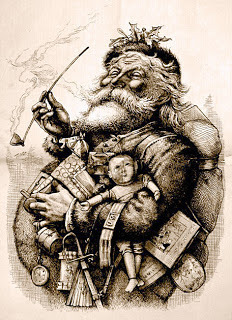 I take my pen in hand to write a few lines that let you know I have conducted myself very well over the past twelvemonth and to say how much I look forward to your upcoming visit on the evening of December 24.
I take my pen in hand to write a few lines that let you know I have conducted myself very well over the past twelvemonth and to say how much I look forward to your upcoming visit on the evening of December 24. Your annual call is truly a highlight of my year. In preparation therefor, I have acquired fresh, whole cow's milk (currently stored in a cold, humidity-controlled environment), added a collection of brightly colored hosiery to my home's feng shui, and gathered together the ingredients for several varieties of home-baked treats. I expect it to be a very enjoyable evening all around and hope you do as well.
In response to your anticipated query “what can I bring,” the answer is, of course, only your own dear self. However, should you feel irresistibly compelled, any or all of the following would be a most welcome addition to the holiday celebration:
A bottle of scotch from the year my husband was born
A pair of flares from the year I was born
Three vertical inches (the repurposing of horizontal inches is highly encouraged)
A hockey season (and/or a new commissioner for the NHL)
Mjölnir
An improved Netflix interface on the Xbox
A “Noah's Ark”-style collection of two each of all of the world's motorcycles
The instant and effortless knowledge of Mandarin
Another Firefly movie
A revised pricing structure for online subscriptions to The New York Times
Six weeks in Taos, all expenses paid
Deborah Ann Woll's complexion
Carl Kasell's voice on my home answering machine or voice mail system
Omnipotent omniscience
Rainbow toe socks
As you may recall from years previous, our current abode is warmed by gas heat, making the front door, as opposed to your standard means of entrance, the more comfortable option.
Again, I look forward to your visit with eager anticipation and wish you safe and pleasant travels.
Sincerely yours,
Michele Feltman Strider
Today's lesson: Santa is real. I'm imaginary.
Next: The Yummish Holiday Letter

Published on December 05, 2012 12:41




